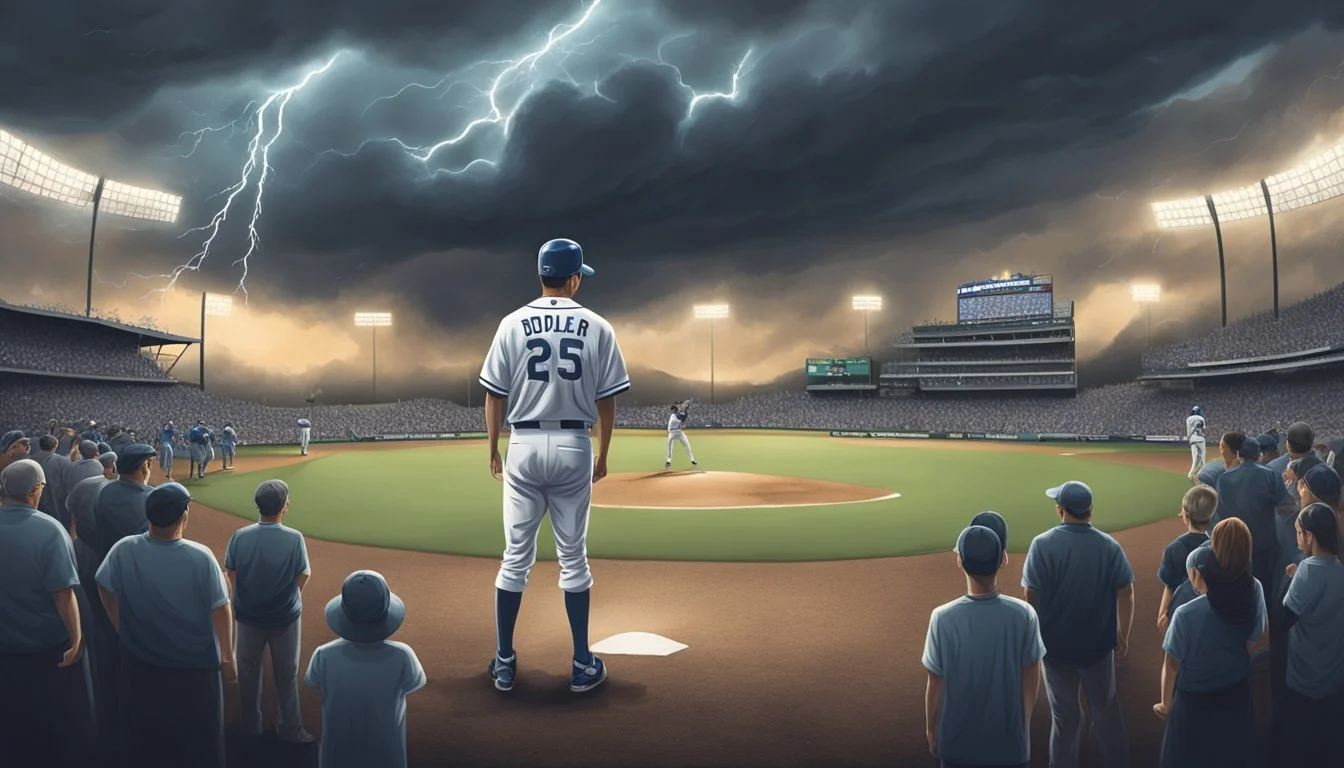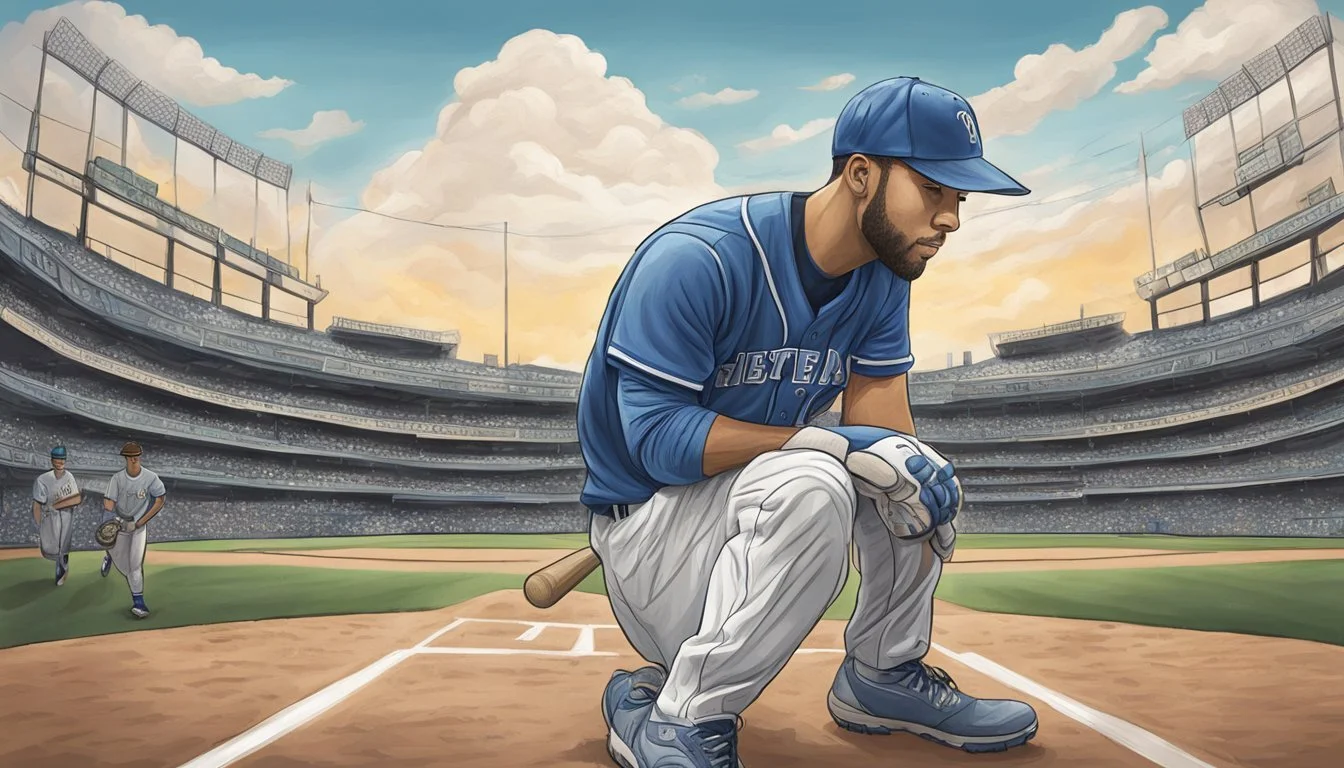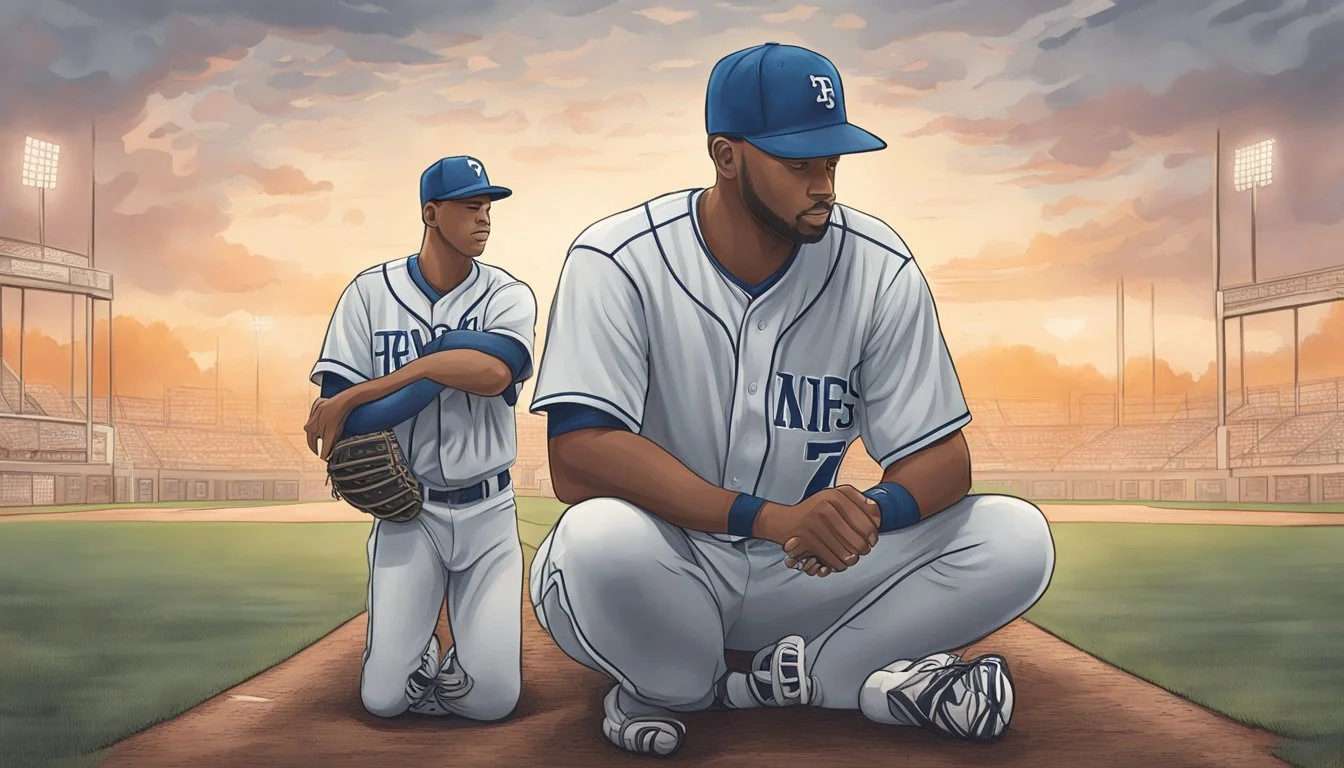Baseball and Bipolar: Jimmy Piersall's Mental Health Journey
A Major League Triumph Over Adversity
Jimmy Piersall's journey through Major League Baseball was marked by both athletic prowess and personal struggles. As a player for teams like the Boston Red Sox and Cleveland Indians, Piersall showcased his talent on the field. Yet behind the scenes, he faced a formidable opponent: bipolar disorder.
Piersall's openness about his mental health challenges in the 1950s and 1960s was groundbreaking, helping to bring bipolar disorder into public awareness. His experiences, detailed in his book "Fear Strikes Out," shed light on the reality of living with mental illness while pursuing a professional sports career.
Piersall's story resonates beyond baseball, touching on themes of resilience and the importance of mental health awareness. His willingness to share his struggles paved the way for future athletes and public figures to speak candidly about their own mental health experiences.
Early Life and Career of Jimmy Piersall
Jimmy Piersall's journey to Major League Baseball began in Waterbury, Connecticut. His natural talent and drive propelled him through the minor leagues and into a successful career with the Boston Red Sox.
Rising Through the Ranks
James Anthony Piersall was born on November 14, 1929, in Waterbury, Connecticut. He showed exceptional athletic ability from a young age. At Leavenworth High School, Piersall excelled in multiple sports, including baseball, basketball, and football.
His skills on the diamond caught the attention of scouts. In 1948, at age 18, Piersall signed with the Boston Red Sox organization. He quickly rose through the minor league system, impressing coaches and fans alike with his speed and defensive prowess in the outfield.
Jimmy Piersall with the Boston Red Sox
Piersall made his Major League debut with the Red Sox in 1950. His first few seasons were marked by both promise and challenges. Piersall's erratic behavior on and off the field began to raise concerns.
Despite these struggles, Piersall's talent was undeniable. He became known for his spectacular catches and strong throwing arm. His intensity and hustle made him a fan favorite at Fenway Park.
By 1953, Piersall had established himself as the Red Sox's everyday center fielder. He played a key role in the team's success during the mid-1950s.
A Star in the Making: All-Star Achievements
Piersall's skills continued to develop, earning him recognition across the league. In 1954, he received his first All-Star selection. This honor was a testament to his growing reputation as one of the best defensive outfielders in baseball.
His batting also improved significantly. In 1956, Piersall hit .293 with 14 home runs and 87 RBIs. This performance earned him a second All-Star nod.
Piersall's journey to stardom was not without obstacles. However, his resilience and talent allowed him to overcome challenges and cement his place among the top players of his era.
Struggles with Bipolar Disorder
Jimmy Piersall's battle with bipolar disorder shaped his baseball career and public image. His openness about mental health challenges helped bring these issues into the spotlight during an era when they were largely stigmatized and misunderstood.
Diagnosis and Public Perception
Piersall's erratic behavior on and off the field initially puzzled fans and teammates. In 1952, he was hospitalized for what was then called "nervous exhaustion." Doctors later diagnosed him with bipolar disorder, known at the time as manic depression.
The public's reaction to Piersall's condition was mixed. Many fans were unsure how to respond to a professional athlete openly struggling with mental illness. Some viewed his antics as mere eccentricity, while others recognized the seriousness of his condition.
Piersall's willingness to discuss his diagnosis publicly was groundbreaking for the 1950s. His candor helped challenge prevailing attitudes about mental health in sports and society at large.
Treatment and Challenges
Piersall underwent various treatments for his bipolar disorder, including a stint in a mental health facility. He received electroshock therapy, a controversial treatment that was more common in that era.
Managing his condition while maintaining a professional baseball career proved challenging. Mood swings and manic episodes sometimes led to on-field outbursts and conflicts with teammates and umpires.
Medication helped stabilize Piersall's condition, but finding the right balance was an ongoing process. He faced the additional challenge of dealing with side effects while trying to perform at a high athletic level.
Impact on Career and Personal Life
Bipolar disorder profoundly affected Piersall's baseball career. His erratic behavior sometimes overshadowed his considerable talents as an outfielder. In 1953, he was involved in a violent brawl with Yankees players, an incident linked to his mental state.
Despite these challenges, Piersall had a successful 17-year career in Major League Baseball. He earned two All-Star selections and won two Gold Glove Awards.
Off the field, Piersall's condition strained his personal relationships. He went through multiple marriages and faced difficulties in family life. However, his struggles also led him to become an advocate for mental health awareness.
Piersall's Advocacy and Anti-Stigma Efforts
Jimmy Piersall's openness about his mental health struggles helped challenge stigma and raise awareness. His courage in sharing his experiences publicly paved the way for important conversations about mental illness in sports and society.
Raising Mental Health Awareness
Piersall's willingness to discuss his bipolar disorder brought attention to mental health issues. He spoke candidly about his time in a mental hospital, helping to humanize the experience for the public. His book "Fear Strikes Out" and the subsequent film adaptation reached a wide audience.
Piersall used humor to address his illness, often making light of his "zany antics" on the baseball field. This approach helped make the topic more approachable for fans and the general public.
He participated in public speaking engagements, sharing his story with diverse audiences. These talks helped combat stereotypes about mentally ill individuals.
Contribution to Mental Health Conversations
Piersall's advocacy efforts extended beyond sharing his personal story. He emphasized that mental illness should be treated like any other medical condition. This message challenged prevailing attitudes of the time.
His public profile as a Major League Baseball player gave him a unique platform to address mental health issues. Piersall's openness encouraged others to seek help and speak out about their own struggles.
Organizations like the National Alliance on Mental Illness (NAMI) have recognized Piersall's contributions to mental health awareness. His story continues to be cited as an early example of a public figure breaking the silence around mental illness.
The Story of Fear Strikes Out
Jimmy Piersall's courageous battle with mental illness became the subject of a groundbreaking book and film. His autobiography and the subsequent movie adaptation brought awareness to mental health struggles in professional sports.
From Autobiography to Film
Jimmy Piersall's 1955 memoir "Fear Strikes Out: The Jim Piersall Story" detailed his experiences with bipolar disorder and his journey in professional baseball. The book, co-written with Al Hirshberg, provided a raw and honest account of Piersall's struggles.
In 1957, Piersall's story made it to the big screen. The film "Fear Strikes Out" starred Anthony Perkins as Piersall and Karl Malden as his father. Directed by Robert Mulligan, it was one of the first major Hollywood productions to tackle the subject of mental illness in sports.
Cultural Impact of Piersall's Story
"Fear Strikes Out" broke new ground in portraying mental health issues in popular media. The film helped initiate conversations about psychological well-being in professional athletics, a topic often overlooked or stigmatized at the time.
Piersall's openness about his condition encouraged others to seek help and speak out. The movie's depiction of his "nervous exhaustion" and subsequent treatment shed light on the challenges faced by individuals with mental illness.
The film's impact extended beyond baseball, contributing to a broader societal dialogue about mental health. It remains a significant cultural touchstone, illustrating the power of personal stories to shape public perception and understanding of complex issues.
Piersall's Later Career and Retirement
Jimmy Piersall's baseball journey continued well beyond his early struggles with bipolar disorder. He played for several teams and remained a notable figure in the sport even after hanging up his glove.
Roles with Various Teams
Piersall's career took him to multiple Major League clubs. He joined the Cleveland Indians in 1959, showcasing his defensive skills in center field. In 1963, he moved to the Washington Senators, followed by a stint with the New York Mets in 1964.
Piersall's time with the Mets was brief but memorable. He hit his 100th career home run and celebrated by running the bases backward, a stunt that led to his release shortly after.
He finished his playing days with the Los Angeles Angels and California Angels from 1964 to 1967. Throughout these years, Piersall continued to display his exceptional outfield defense and crowd-pleasing antics.
Legacy and Retirement
After retiring as a player, Piersall remained involved in baseball. He worked as a broadcaster for the Texas Rangers and Chicago White Sox, bringing his unique personality to the booth.
Piersall's legacy extends beyond his on-field accomplishments. He became an advocate for mental health awareness, openly discussing his experiences with bipolar disorder. His courage in addressing mental health issues helped reduce stigma in sports.
Throughout his 17-year MLB career, Piersall earned two All-Star selections and two Gold Glove Awards. He finished with a .272 batting average and was known for his excellent defense in center field.
Piersall passed away in 2017, leaving behind a complex legacy that intertwined baseball excellence with mental health advocacy.
Highlights and Achievements
Jimmy Piersall's baseball career was marked by outstanding defensive play and several notable accomplishments, despite his mental health challenges. His on-field excellence earned him recognition and accolades from fans and peers alike.
All-Star Teams and Gold Glove Awards
Piersall's defensive prowess in center field was widely recognized throughout his career. He earned Gold Glove Awards in 1958 and 1961, cementing his reputation as one of the best outfielders of his era. The awards highlighted his exceptional fielding skills and ability to make difficult catches look routine.
Piersall was selected to the American League All-Star team twice, in 1954 and 1956. These selections showcased his overall value as a player, combining his defensive talents with solid offensive contributions. His All-Star appearances helped raise his profile in the baseball world and demonstrated his ability to compete at the highest level.
Memorable Games and Moments
One of Piersall's most famous moments came on June 23, 1963, when he hit his 100th career home run. He celebrated by running around the bases backwards, a move that typified his colorful personality and garnered significant attention from fans and media.
Piersall also had memorable interactions with legendary figures in baseball. He faced Satchel Paige in 1952, describing the experience as a highlight of his career. Casey Stengel, known for his unique managerial style, praised Piersall's defensive abilities, calling him one of the best center fielders he had ever seen.
Throughout his career, Piersall's on-field performances often overshadowed his off-field struggles, showcasing his resilience and talent as a Major Leaguer.
The Enduring Influence of Jimmy Piersall
Jimmy Piersall's openness about his bipolar disorder changed the conversation around mental health in baseball and beyond. His courage in sharing his struggles helped bring mental illness out of the shadows.
Piersall's public battle with what was then called manic depression shed light on the realities of living with severe anxiety and mood swings. He spoke candidly about his experiences with sleeplessness and other symptoms.
His 1955 book "Fear Strikes Out" was groundbreaking in its honest portrayal of mental illness. The book and subsequent film adaptation raised awareness and challenged stigma at a time when such topics were rarely discussed publicly.
Piersall's advocacy extended beyond his playing career. He continued to speak out about mental health issues for decades, encouraging others to seek treatment.
His willingness to discuss his use of lithium treatment helped normalize medication as part of mental health care. This openness paved the way for other athletes to speak more freely about their own mental health challenges.
Piersall's legacy lives on through mental health initiatives in baseball. His story continues to inspire players and fans alike to prioritize mental wellbeing and seek help when needed.






